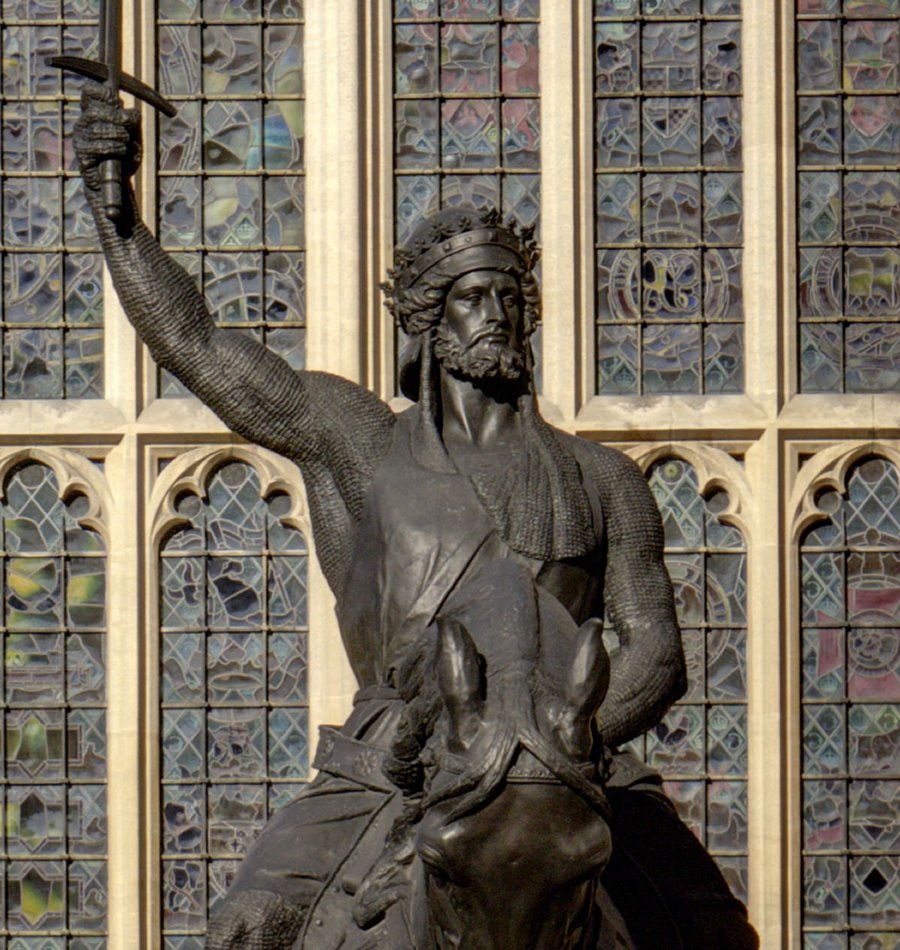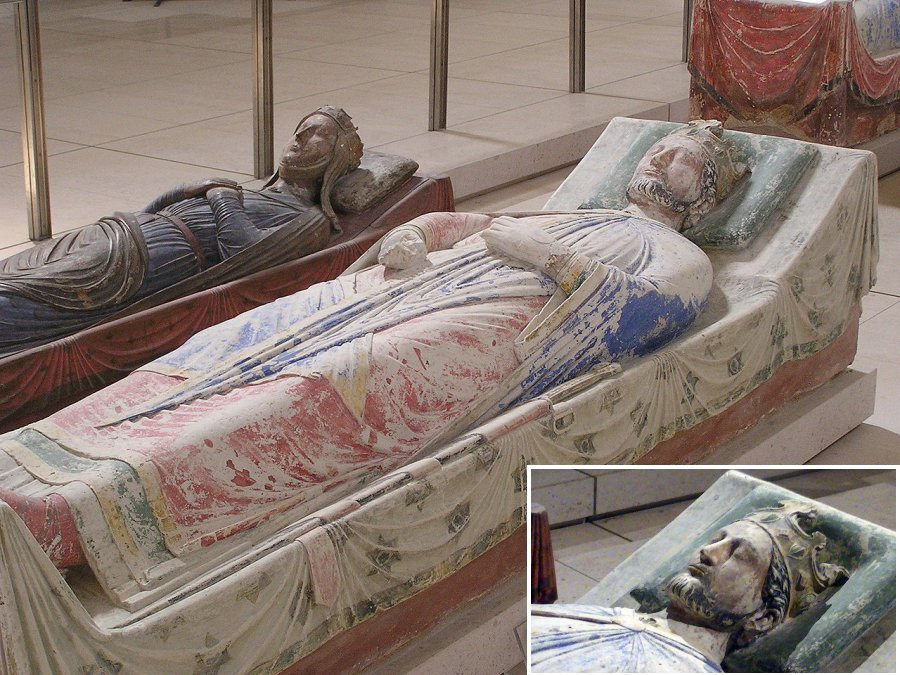Richard The Lionheart: Famous Leader, Warrior And Military Mastermind But Not The Best English King
A. Sutherland - AncientPages.com - Probably the most famous medieval ruler of England - though not the best - was Richard Plantagenet, better known as Richard the Lionheart (“Coeur de Lion”).
Richard has always been portrayed as England’s hero-king, but during his 10-year reign, he spent only six months in England, a mighty but disorganized empire (England and English property in France).
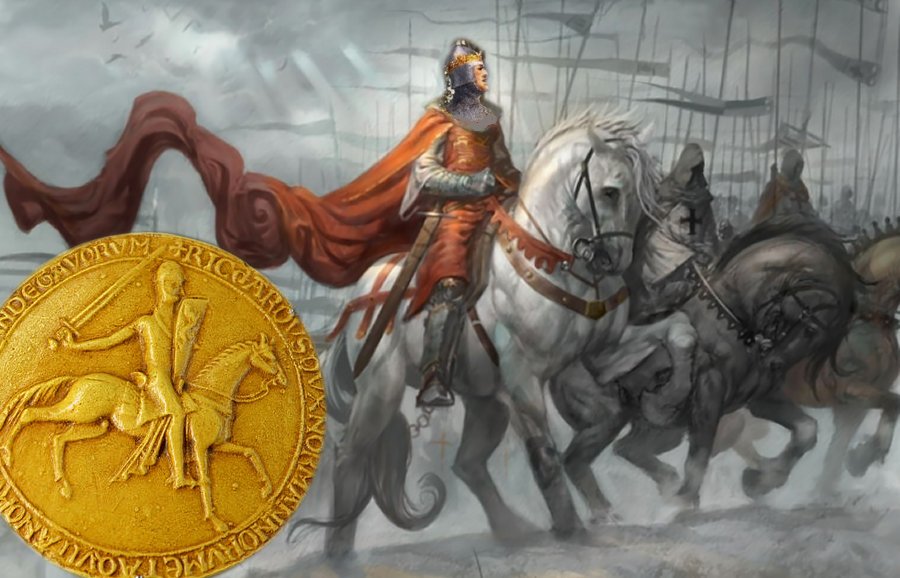 Richard I, titled Coeur de Lion, (or Lionheart), ascended the British throne, in alliance with King Philip II of France.
Richard I, titled Coeur de Lion, (or Lionheart), ascended the British throne, in alliance with King Philip II of France.
He did not speak English and he was not interested to rule England. He wanted to win the knight’s fame either through rebellion against his own father or participating in a crusade to the Holy Land.
‘I would have sold London itself if I could have found a rich enough buyer,’ he said.
He gained a reputation as a great military leader and warrior; his main ambition was to join the Third Crusade, prompted by Saladin's capture of Jerusalem in 1187. When Richard took the throne it was shortly after Saladin’s capture of Jerusalem in 1187, and preparations were being made for the Third Crusade.
Richard was the son of the mighty King Henry II and the Eleanor of Aquitaine, one of the few women of the Middle Ages who decidedly influenced the fate of the states. The young Richard was brought up in an atmosphere of accusations and grievances between his parents. He also experienced a difficult political situation when the mighty English and French barons were dissatisfied with the strong rule of Plantagenet.
Statue of Richard I, Westminster - front view. Image credit: Prioryman - CC BY-SA 4.0
The family situation changed radically on July 6, 1189; sick and abandoned by all, Richard’s father, Henry II, died.
Richard I, titled Coeur de Lion, (or Lionheart), ascended the British throne, in alliance with King Philip II of France. However, he did not intend to keep up with previous arrangements and refused to pay homage to the British property on the continent. All relations were broken, and a war was imminent. The only help could come from Pope and so it happened. Both monarchs had to conclude an agreement as soon as possible and embark on a crusade.
The Muslims had just taken over Jerusalem.
As soon as Richard had raised an army, he headed for the Holy Land, leaving England in the hands of his mother, Eleanor. In 1190, he departed for the Holy Land to establish bases for crusades in Sicily in 1190 and Cyprus, which he took in 1191.
On 8 June 1191, after landing in Palestine with his ally Philip II of France, he joined the siege of Acre, located in what is now, Akko in Israel.
King Henry II, King Richard the Lionheart and Queen Eleanor of Aquitaine, in Fontevraux Abbey near Chinon, in Anjou, France. (Photographed July 2003) Richard died at Le Château de Châlus Chabrol in Châlus of a crossbow wound. His entrails were buried at the château while his heart was taken to Rouen and the rest of the body to Fontevraud. Image credit: Maksim - Public Domain
Although the conflict had been in progress for two years, Richard moved quickly and he managed to defeat the Muslim defenders within six weeks. When Richard reached Acre, the siege had been going on there for two years. However, the king had not traveled so long-distance for nothing.
He had a plan to quickly overpower Acre, an ancient city dating back thousands of years. This brave and skilled warrior had also the physique of a warrior. At six foot four, Richard towered over others; he was like a giant among ordinary men. The muscles of his strong arms, chest, and back were well developed because he had long practice with the sword and spear.
The arrival of the English king, the legendary Lionheart, with no doubt greatly strengthened
the camp of the besiegers.
In total, during the Third Crusade that lasted from 1191 to 1192, Richard The Lionheart won victories at Cyprus, Acre, and Arsuf (against Saladin), but failed to recover Jerusalem, though he came close to the city.
While returning to the land, the great warrior was captured by the Duke of Austria, who handed him over to the emperor Henry VI. He was held prisoner and later released after a large ransom was paid. Eventually, Richard had to abandon his ambition of taking Jerusalem. In September 1192, Saladin agreed to a three-year truce, which left Acre and a thin coastal strip in the hands of the crusaders.
Richard returned briefly to England, and then he again became engaged in warfare in France. In 1199, while besieging the castle at Châlus, France, Richard was hit in the shoulder by an arrow from a crossbow. Gangrene set in and he died on 6 April, aged 42.
Richard's heart was buried at Rouen in Normandy, France, his entrails in Châlus, where he died, and the rest of his body was buried at the feet of his father at Fontevraud Abbey in Anjou. He left no heir.
Until today, the castle’s fame is associated with the death of King Richard the Lionheart.
Written by – A. Sutherland AncientPages.com Staff Writer
Copyright © AncientPages.com All rights reserved. This material may not be published, broadcast, rewritten or redistributed in whole or part without the express written permission of AncientPages.com
Expand for references
References:
Cawthorne, N. Kings and Queens of England
S. Kay Penman, Lionheart
J. Reston Jr. Warriors of God
More From Ancient Pages
-
 Ancient Tomb Of William The Conqueror’s Nephew Discovered In Exeter
Archaeology | Aug 1, 2023
Ancient Tomb Of William The Conqueror’s Nephew Discovered In Exeter
Archaeology | Aug 1, 2023 -
 Humans Lived In The Qal-e Kord Caves 400,000 Years Ago – Oldest Settlement In Iran Found?
Archaeology | Aug 24, 2022
Humans Lived In The Qal-e Kord Caves 400,000 Years Ago – Oldest Settlement In Iran Found?
Archaeology | Aug 24, 2022 -
 1,500-Year-Old ‘Magical Mirror’ To Protect Against Evil Eye Discovered By A Teenager In Israel
Archaeology | Aug 9, 2023
1,500-Year-Old ‘Magical Mirror’ To Protect Against Evil Eye Discovered By A Teenager In Israel
Archaeology | Aug 9, 2023 -
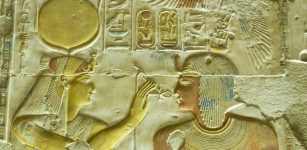 Hathor – One Of Ancient Egypt’s Greatest Female Deities
Egyptian Mythology | Jun 16, 2021
Hathor – One Of Ancient Egypt’s Greatest Female Deities
Egyptian Mythology | Jun 16, 2021 -
 Nova Anglia: The Anglo-Saxon New England In The East
History | Jun 13, 2022
Nova Anglia: The Anglo-Saxon New England In The East
History | Jun 13, 2022 -
 Ancient Suda: Massive Anonymous Byzantine-Greek Lexicon Dated To 10th Century
Featured Stories | Nov 6, 2018
Ancient Suda: Massive Anonymous Byzantine-Greek Lexicon Dated To 10th Century
Featured Stories | Nov 6, 2018 -
 Evidence Of Lost Advanced Ancient Technology In Babylon
Ancient Mysteries | Dec 4, 2018
Evidence Of Lost Advanced Ancient Technology In Babylon
Ancient Mysteries | Dec 4, 2018 -
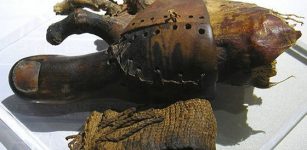 Prehistoric Evidence Of Sophisticated Prosthetics In Ancient Egypt – Artificial Toes Helped Egyptians Walk
Archaeology | Feb 20, 2014
Prehistoric Evidence Of Sophisticated Prosthetics In Ancient Egypt – Artificial Toes Helped Egyptians Walk
Archaeology | Feb 20, 2014 -
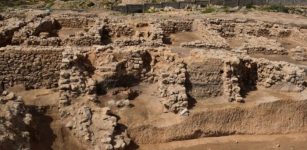 Ancient Greco-Roman Amphora Workshop Discovered In Alexandria, Egypt
Archaeology | Apr 17, 2022
Ancient Greco-Roman Amphora Workshop Discovered In Alexandria, Egypt
Archaeology | Apr 17, 2022 -
 Crusader-Era Sword Discovered At Previously Unknown Burial Site In Finland
Archaeology | Oct 16, 2023
Crusader-Era Sword Discovered At Previously Unknown Burial Site In Finland
Archaeology | Oct 16, 2023 -
 Wanyūdō The Soultaker – Fearsome Yōkai In Japanese Mythology
Featured Stories | Nov 22, 2017
Wanyūdō The Soultaker – Fearsome Yōkai In Japanese Mythology
Featured Stories | Nov 22, 2017 -
 Queen Dido Of Carthage: Founder Of Prosperous City On Africa’s Northern Coast
Featured Stories | May 21, 2020
Queen Dido Of Carthage: Founder Of Prosperous City On Africa’s Northern Coast
Featured Stories | May 21, 2020 -
 Artifacts Discovered In Ancient Florida Sinkhole Can Re-Write History Of North America
Archaeology | May 14, 2016
Artifacts Discovered In Ancient Florida Sinkhole Can Re-Write History Of North America
Archaeology | May 14, 2016 -
 Unexplained Mystery In Ohio – Unusual Force Puzzles Scientists
Featured Stories | Dec 21, 2018
Unexplained Mystery In Ohio – Unusual Force Puzzles Scientists
Featured Stories | Dec 21, 2018 -
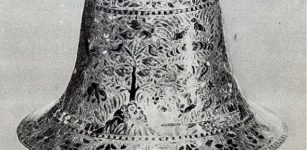 Enigma Of Ancient Bell-Shaped Metal Vase Found In Solid Sedimentary Rock
Artifacts | Jun 6, 2019
Enigma Of Ancient Bell-Shaped Metal Vase Found In Solid Sedimentary Rock
Artifacts | Jun 6, 2019 -
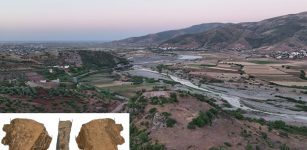 First Bronze Age Settlement Predating The Phoenicians Discovered In Maghreb
Archaeology | Mar 5, 2025
First Bronze Age Settlement Predating The Phoenicians Discovered In Maghreb
Archaeology | Mar 5, 2025 -
 Why Was The Moretta Mask So Popular?
Ancient History Facts | Feb 14, 2020
Why Was The Moretta Mask So Popular?
Ancient History Facts | Feb 14, 2020 -
 Unique Heart-Shaped Jesuit Ring At Fort St. Joseph In Michigan
Archaeology | Sep 17, 2022
Unique Heart-Shaped Jesuit Ring At Fort St. Joseph In Michigan
Archaeology | Sep 17, 2022 -
 Matches Were Invented In Ancient China
Ancient History Facts | Mar 7, 2019
Matches Were Invented In Ancient China
Ancient History Facts | Mar 7, 2019 -
 Human DNA Shaped By Past Events Caused Sharp Dips In The Population
News | Jun 27, 2022
Human DNA Shaped By Past Events Caused Sharp Dips In The Population
News | Jun 27, 2022

